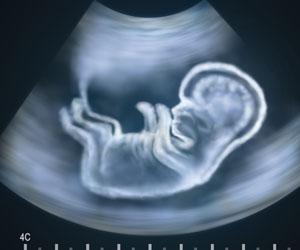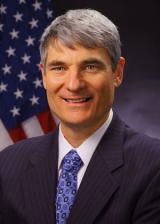EPA Science Matters Newsletter: Volume 3, Number 4
Published October 2012
About this Issue
- About this Issue
Science Matters to Children's Environmental Health

Picking food up from the floor, playing in dirt, exploring the world through touch and taste. These are all normal parts of child development. But they are also some of the behaviors that may mean trouble for young children under the wrong circumstances.
From an environmental health perspective, the behavior of children may increase their risk of exposure to potentially harmful chemicals. What's more, pound-for-pound children eat, drink, and breathe more than adults. And because their bodies and internal systems are still growing and developing, the earliest stages of life are periods when the potentially harmful effects of environmental exposures can be most pronounced.
Keeping children safe is the focus across the government during October: Children's Health Month. President Obama marked Child Health Day on October 1, 2012 with a Proclamation that states:
A safe environment in which our children can live and grow is also essential to their well-being. Because clean water is the foundation for healthy communities, we are working to reduce contaminants in our drinking water by updating standards and better protecting our water sources from pollution. We are also building on the successes of the Clean Air Act to improve our air quality and help decrease harmful toxins that can lead to acute bronchitis, asthma, cancer, and impaired development.
EPA scientists and their research partners have been working to support clean water, clean air, and fewer toxins in the environment for more than 40 years. Much of that work has focused specifically on advancing children's health.
Today, EPA research continues to provide a better understanding of how young people at every stage of development can be exposed to harmful substances in the environment and what those exposures might mean to their health today and well into the future.
Please enjoy this issue of EPA's Science Matters to learn more about how EPA researchers and their partners are working to protect children from environmental threats and promote environmental health wherever they live, learn, and play.
GEMS: Great Environmental Moments in Science
- Understanding Exposures in Children's Environments
EPA scientists and their partners provide key research outcomes for understanding and reducing environmental risks to children's health.

Anyone who has ever watched a toddler barreling around knows that trouble lurks around every corner. Young children crawl around on the floor, play in dirt, and put just about anything they can into their mouths, whether it's a cookie from the floor, a plastic toy, or a dust-covered curiosity grabbed from under the sofa. These types of behaviors put kids at risk of being exposed to something toxic.
By developing better science-based knowledge about how kids are exposed to harmful things in their environments, it's possible to reduce their risks and take action to better protect them. That's the goal of EPA's childhood exposure research.
EPA's work to understand childhood exposure began shortly after the Agency was established in 1970. The early studies focused primarily on how young people might encounter pesticides during their daily routines.
"Products or behaviors that parents think are perfectly acceptable might come with unintended consequences," said Nicolle Tulve, PhD, a research physical scientist at EPA. "In all our research, we're focused on day-to-day behavior; we want to understand what exposures are like for kids leading typical lifestyles."
One important way that EPA has increased the understanding of children's exposures is by developing the Child-Specific Exposure Factors Handbook, which provides information on various physiological and behavioral factors commonly used in assessing children's exposure to environmental chemicals. It is used by scientists, economists, health assessors, and others within and outside EPA conducting exposure assessments, a critical step in identify human health risks—including those to children's health—from exposure to chemical contaminants and other environmental stressors.
To conduct an exposure assessment, scientists need to understand aspects of exposure, such as how much air a person breathes or how much water a person drinks on a daily basis. EPA's Exposure Factors Handbook, a standard reference tool, helps by summarizing information and recommendations on factors relevant to exposure assessments. Recently updated in 2011, it provides the most accurate and relevant information on factors ranging from the intake of fruits and vegetables to consumer product use.
But because a child's exposure differs from an adult's exposure, EPA developed the Child-Specific Handbook in 2008. The child-specific handbook takes into account that children typically have different diets, higher inhalation rates per unit of body weight, and come into contact with contaminated surfaces when they play close to the ground. Understanding these differences is critical for evaluating potential environmental hazards from pollutants and will help protect children from dangerous exposures.
"By understanding exposure, we can help parents and other caregivers make more informed decisions about how to protect their child's health," explained Tulve.
Children's Health Research in Action
EPA’s children’s exposure research helps to paint a picture of how an environmental contaminant might affect children’s health. This research provides a better understanding of the potential sources, routes, pathways, and exposure factors that are important for children’s exposures, supporting better and earlier decisions on when and how to reduce or eliminate environmental exposures that are potentially harmful to children.

Some of EPA’s current and past children’s exposure research includes:
- EPA recently partnered with the U.S. Consumer Product Safety Commission (CPSC) to develop tools, approaches, and protocols they need for determining if nanosilver is released from children's consumer products under real-world conditions, thus making it potentially available to children.
Preliminary study results, conducted on 13 products containing nanosilver, indicate that the silver levels to which children may potentially be exposed during normal product use is low.
- EPA scientists recently used the Stochastic Human Exposure and Dose Simulation Model for multimedia pollutants (SHEDS-Multimedia), an innovative modeling tool used to estimate total exposures from chemicals encountered in everyday activities, to estimate soil and dust ingestion exposures of children ages three to six years.
Researchers found that on average, 60 percent of total soil and dust ingestion among children ages 3 to 6 years, is from soil ingestion, 30 percent is from dust on hands, and 10 percent is from dust on objects.
EPA and University of California Davis scientists are collaborating to conduct the Study of Use of Products and Exposure Related Behaviors (SUPERB), which examines human behaviors and how they influence exposure to chemicals in homes. As part of the research, EPA scientists have developed methods for analyzing selected types of chemicals found in household dust, surface wipes, passive air collection and cotton garment samples.
Related Resources
- Exposure Research
- Exposure Factors Program
- Child-Specific Exposure Factors Handbook (Final Report) 2008
- Exposure Factors Handbook 2011 Edition (Final)
- Stochastic Human Exposure and Dose Simulation (SHEDS) Model
- Study of Use of Products and Exposure-Related Behaviors (SUPERB): study design, methods, and demographic characteristics of cohorts.
- EPA recently partnered with the U.S. Consumer Product Safety Commission (CPSC) to develop tools, approaches, and protocols they need for determining if nanosilver is released from children's consumer products under real-world conditions, thus making it potentially available to children.
- Closing the Asthma Gap for Minority and Poor Children
EPA scientists and their partners are working to better understand why asthma disproportionately affects minority and poor children.

Nearly 26 million Americans, including seven million children, are affected by asthma, a chronic respiratory disorder that causes airways in the lungs to swell and narrow, leading to wheezing, coughing, and shortness of breath. The annual economic cost of asthma, including direct medical costs from hospital stays and indirect costs such as lost school and work days, amounts to approximately $56 billion.
But when emergency room doors burst open for someone with an asthma attack, chances are the patient will be a poor, minority child.
According to the Centers for Disease Control and Prevention (CDC), minority children living in poor socioeconomic conditions are at greatest risk. For instance, 16% of African American children had asthma in 2010 compared to 8.2% of white children, and they are twice as likely to be hospitalized with an asthma attack and four times more likely to die than white children. The asthma rate among children living in poverty was 12.2% in 2010, compared to 8.2% among children living above the poverty line.
"Across America we see low-income and minority children and families at a disproportionately higher risk for asthma and respiratory illnesses. Air pollution and other challenges are having serious health effects, which compound economic challenges through medical bills and missed school and work days," said EPA Administrator Lisa P. Jackson. "As the mother of a child with asthma, I know what it means for our children to have clean and healthy air to breathe."
Administrator Jackson made those remarks during the unveiling of the Coordinated Federal Action Plan to Reduce Racial and Ethnic Asthma Disparities, a blueprint for how EPA and other federal agencies can team up to reduce asthma disparities.
A major part of that effort is the work conducted by EPA scientists and their partners exploring environmental causes and triggers of asthma, including how socioeconomic factors contribute to childhood asthma. The overall goal is to illuminate the underlying factors of asthma to support work on prevention and intervention strategies.
What increases the risk of developing asthma? While part of the answer certainly lies with genetics, as more than half of all children with asthma also have close relatives with the illness, the environment also plays a key role. Air pollutants, allergens, mold, and other environmental agents trigger asthma attacks.
EPA researchers and their partners are leading the effort to develop new scientific methods, models, and data for assessing how such triggers increase the risk for asthma and asthma attacks. The impact of this research has already contributed to current regulatory standards for two priority air pollutants regulated under the National Ambient Air Quality Standards (NAAQS): ozone and particulate matter (PM). EPA's asthma research has also been factored into health assessments for diesel emissions.
The next step is to learn ways to better protect those most at risk.
"Now we're digging into the disparities side of the asthma problem," said Martha Carraway, MD, a researcher at EPA. "Kids with poorly controlled asthma are more likely to be treated in the emergency room than kids with controlled asthma. So for public health reasons we need to understand how environmental factors, including air pollution, affect asthma control in vulnerable populations."
 Photograph of the 2008 North Carolina wildfire
Photograph of the 2008 North Carolina wildfireTo advance that work, EPA researchers and their partners took advantage of a 2008 lightning strike that occurred in Pocosin Lakes National Wildlife Refuge in North Carolina. The 40,000-acre (16,000-hectare), smoldering peat fire sparked by the lightning sent thick, billowing clouds of smoke wafting into the air.
In collaboration with scientists at the University of North Carolina Center for Environmental Medicine, Asthma, and Lung Biology, a team of EPA researchers led by David Diaz-Sanchez, PhD compared emergency room visits for asthma with air quality reports. Looking at the results geographically, they found that low income counties had significantly more visits than more affluent counties, even though air quality and exposure levels were the same.
"EPA studies suggest that children and others living in low-income counties could be less resilient to air pollution, possibly because of social factors such as inadequate nutrition. For example, if you're poor and you're not eating well, your asthma may be more severe," said Nsedu Obot Witherspoon, MPH, the Executive Director of the Children's Environmental Health Network, a national multi-disciplinary organization whose mission is to protect developing children from environmental health hazards and promote a healthier environment. "Of course, other factors may also be involved, such as whether kids take medications correctly and whether they have access to good medical care."
EPA's research on asthma disparities can help guide newer and better interventions for reducing exposure to asthma triggers and limiting the impacts of the ailment, helping to close the gap for minority and poor children and improving the health of children everywhere.
Coordinated Federal Action Plan to Reduce Racial and Ethnic Asthma Disparities
Science to Support National Ambient Air Quality Standards
Tackling Asthma Disparities at the Children’s Environmental Health Centers
Related Resources
- The National Children's Study
EPA researchers contribute to the largest federal study ever undertaken to examine environmental influences on the health and development of children.

The U.S. Environmental Protection Agency and a consortium of federal partners, led by the Eunice Kennedy Shriver National Institute of Child Health and Human Development and also including the Centers for Disease Control and Prevention, and the National Institute of Environmental Health Sciences, are working together to conduct The National Children's Study, an ongoing, long-term study of environmental and genetic influences on children's health.
During the study, researchers plan to follow 100,000 children from before birth through their 21st birthdays to learn how environmental influences affect children's health, their growth, and their development. Data from the study are expected to inform research into a host of different conditions, including birth defects and pregnancy-related problems, injuries, asthma, obesity, diabetes, and behavior problems, learning disabilities, and mental health disorders. Ultimately, findings from the Study will help to ensure a brighter and healthier future for America's children.
Related Resources
- The Science Matters Podcast: Questions and Answers with EPA's Dr. Peter Grevatt
The latest Science Matters podcast features Dr. Peter Grevatt, the director of EPA's Office of Children's Health Protection.
Below are a few highlights of the conversation. Listen to the entire conversation:
(mp3, 8.2 MB, 9:03min)Science Matters: Can you give us an overview of the work EPA does to protect our children and help give them a safer future?
Dr. Grevatt: EPA's mission is to protect human health and the environment, and our goal is to focus on the protection of children in everything we do that affects human health. Our children's health agenda includes three key priorities. First, to use the best science on children's environmental health as we implement environmental laws. Second, to protect children through the safe use of chemicals. And third, to implement effective, community-based programs to reduce threats to children's health.
A few examples of EPA’s work under these priorities include the recently finalized mercury and air toxics standards that will prevent 130,000 asthma attacks every year. The value of air quality standards such as these total between $37 and $90 billion each year - and those are just health-related savings.
Another example of the work EPA does to protect children’s health is partnerships with other government agencies and nonprofit organizations to improve environments where children spend most of their time, such as homes and schools. And earlier this year, EPA partnered with Health and Human Services and the Department of Housing and Urban Development to release a coordinated federal action plan to reduce racial and ethnic asthma disparities.
Science Matters: That’s an impressive amount of work EPA is doing to protect our children. All of these effects are supported by science, correct?
Dr. Grevatt: Yes, all of these actions, and others, rely on the use of the latest science on children’s environmental health.
Science Matters: Can you tell us a bit more about how EPA’s science and research support your efforts to protect children?
Dr. Grevatt: EPA simply cannot be fully successful in fulfilling our children’s health mission without a strong research program. We know there are unique windows of vulnerability for children developing in the womb and early in their lifetimes. We also know that children are exposed to a myriad of chemicals during development, many of which have very little toxicity data available, and we know that children are much more highly exposed to these compounds than adults. We often do not yet know the implication of these factors for children’s health, and this is why a continued robust children’s health research program is so important.
A good example of science and research that help protect children’s health is the Children’s Health Research Centers, jointly sponsored by EPA and NIEHS, that foster research collaborations among clinical and behavioral scientists with participation from local communities. These centers contribute to understanding the complex interactions between the environment, genetics, and other factors, and how those interactions affect children’s health from preconception through young adulthood.
Science Matters: In your opinion, what area of children’s health research has had the biggest impact on EPA protecting children?
Dr. Grevatt: Some of the most important emerging areas from the Children’s Health Research Centers include endocrine disrupting chemicals, epigenetics, and implications for pesticide exposure in children.
Another important area of research includes having additional toxicity studies of developmental endpoints. These have helped the agency develop more health assessments that address potential childhood concerns. Some of the newer IRIS assessments have included critical effects for developmental outcomes.Also, comprehensive children’s exposure factors have been critically important because we now understand how much more children’ eat and drink , pound for pound, than adults. We also much better understand the unique behaviors like breastfeeding and putting non-food objects in children’s mouths and how this makes children more vulnerable to environmental factors.
Science Matters: In your opinion, what area of children’s health research has had the biggest impact on EPA protecting children?
Dr. Grevatt: It is really difficult to identify just one type of research that has had the biggest impact and that’s because all lines of children’s health research support EPA’s efforts to protect children. So, I gave you examples of epidemiology research, toxicology, health assessments, and children’s exposure factors. We need data from all of these lines of research to help make sure we’re protecting children’s health.
Science Matters: Looking back over the past ten years, what kind of overall progress do you think we’ve made as a result of EPA’s children’s environmental health research?
Dr. Grevatt: Substantial progress has been made toward advancing children’s environmental health over the past ten years. The unique vulnerabilities of children have increasingly become an essential part of the national discussion on policy, science, and education in public health.
In recent years, we’ve seen laws and regulations to protect children from chemical exposures and other environmental hazards, and our increased understanding of the complex link between children’s health and environmental exposures has advanced our children’s health protection activities.For example, ten years ago we certainly understood that lead impacts children’s IQs, but through additional research, we now understand that even low levels of lead exposure can affect children’s health. This increased understanding of lead’s effects led to the development of a revised National Ambient Air Quality Standard (NAAQS) that substantially strengthened protections for children from lead exposures in air.
Science Matters: Going forward, what would you say is the greatest challenge we face in the field of children’s’ environmental health?
Dr. Grevatt: One of the greatest challenges we face is how to address the many stark disparities in children’s chronic health outcomes that we see in America today. For example, the national prevalence of asthma in children is slightly less than 10%, but in African American children it’s nearly 16%. There is a very high prevalence of asthma in Puerto Rican neighborhoods as well.
If we want to address these issues and help protect all of the children in America, we must build on the progress that’s been made in pediatric care, medical research, and community involvement. We need to expand the conversation on children’s health by getting messages out to parents and health care providers about basic, simple steps they can take to help to protect children from potentially dangerous exposures.Another major challenge is understanding the vulnerabilities during both the prenatal and postnatal periods of a child’s development. There’s still more we need to know in this area to determine how we can best protect pregnant mothers to have healthier children at these critical stages of life.
A strong children’s health research program has laid the foundation for the progress that we’ve made to date. I’m confident that a robust children’s health research program will lead to continued progress in EPA’s work on children’s health in the future.
- Mothers Matter: Looking for a Healthy Start
EPA researchers and their partners are exploring the links between early exposures to pollution and potential health effects later in life.

There's a lot that expectant mothers can do to give their babies a better chance for a healthy start: get plenty of rest, take prenatal vitamins, get regular checkups, and avoid alcohol and smoking.
What they can't do: stop eating, drinking water, or breathing.
EPA scientists and their partners, including researchers supported by grants from the Agency's Science to Achieve Results (STAR) Program and sister Federal agencies such as the National Institute of Environmental Health Sciences (NIEHS) are exploring potential links between a mother's everyday exposures to environmental pollutants during pregnancy and the health consequences those exposures might have for her baby in the future.
The results of the research will help mothers know what they can add to their "to do" (or "to not do") lists when preparing for a healthy new arrival. The research will also provide important information to public policy officials and healthcare providers.
Reducing Children’s Health Risks from Exposure to Pesticides
Every year, approximately one billion pounds of pesticides are used in the United States. Unfortunately, the early life stages can be particularly vulnerable to unintended consequences from pesticide exposure.
Children’s health research has already identified—and helped diminish—increased risks that children face from pesticide exposure through everyday activities. By exploring possible links between prenatal exposures to pesticides and potential health effects after birth, researchers and their partners are further advancing the science of protecting children’s health.
There is strong evidence that prenatal exposure to even low levels of organophosphate (OP) pesticides can harm children’s health. Studies by university-based scientists funded by EPA and NIEHS have revealed links between prenatal exposure to two OP pesticides—chlorpyrifos and diazinon—and reduced birth weight and length.
While EPA has banned the use of both pesticides in residential settings, they (and other OP pesticides) are still widely used in agriculture and can be applied in public spaces such as parks and golf courses. As a result, children living in agricultural communities can still be exposed, and residues of the pesticides can be present on some conventionally-grown produce.
Recent advances in OP pesticide exposure research gained national attention in 2011, when several landmark scientific papers were published by three of the EPA/NIEHS Children’s Environmental Health and Disease Prevention Research Centers (see also Protecting Children’s Health for a Lifetime in this issue). The results of those studies revealed links between prenatal exposure to OP pesticides and disrupted brain and nervous system development.

Beginning in 1998 and 1999, the three studies measured OP pesticide levels in mothers’ blood, urine, and in-home environments during pregnancy and after children were born. The multi-year studies allowed researchers to gather health information from birth to childhood, allowing them to investigate early life stage exposures, behavior, and other health outcomes later in childhood.
One of these studies, by scientists at the Center for Environmental Research and Children’s Health (CERCH) at the University of California, Berkeley, found that higher prenatal levels of OP pesticides in mothers’ urine were associated with lower scores Exit for working memory (memory the brain uses while actively engaged in a task Exit), verbal comprehension, Intelligence Quotient (IQ), and other measures in children from the “CHAMACOS” cohort at age seven. CHAMACOS stands for Center for the Health Assessment of Mothers and Children of Salinas, a study looking at the health impacts of pesticides and other environmental chemicals that may affect children’s health, growth, and brain development.
Similar results were obtained by scientists at the EPA/NIEHS Center for Children’s Environmental Health at Columbia University. In that study, high cord-blood measures of the OP pesticide chlorpyrifos were linked to lowered IQ and deficits in working memory in children at age seven Exit.
And in the third study, scientists at the EPA/NIEHS Children’s Center at the Mount Sinai School of Medicine found that prenatal exposure to OP pesticides was associated with deficits in mental and perceptual reasoning among six- to nine-year-old children Exit.
Although the studies are not directly comparable, all three studies in three different groups of children show similar results linking prenatal exposure to OP pesticides with adverse effects on cognitive function in childhood. The results add to the weight of evidence that prenatal exposure to OP pesticides can have detrimental effects on children’s cognitive development.
Subsequent studies have continued to build on the work. Researchers at the Columbia Children’s Center followed up their analysis by looking at MRI brain scans of some of the children in the original study. Results, published in 2012 in the Proceedings of the National Academy of Sciences Exit, revealed links between children whose mothers had higher levels of chlorpyrifos exposure and structural changes in their brains that are consistent with lower IQ scores in the exposed children. In addition, gender differences between the male and female brain appeared to be disrupted.
Studies from the UC Berkeley/CERCH Children’s Center, in collaboration with other Children’s Center researchers, have shown that there can be significant genetic differences between individuals in the ability to detoxify OP pesticides in the body through differing efficiency and quantity of an enzyme called paraoxonase (PON). They also found that until the age of nine, children in general have lower capacity than adults to detoxify OP pesticides.
Breathing Easier
Another part of EPA’s research on prenatal exposures is looking at the potential future health effects that may result from air pollution exposure. Two recent publications from that work provide important clues into two potential effects: weight gain and neurobehavioral problems.
EPA researchers collaborated with partners from Duke University Medical Center on a laboratory study that explored how prenatal exposure to diesel exhaust might be linked to obesity later in life Exit.
To conduct the study, researchers exposed a group of pregnant laboratory mice to air containing diesel exhaust at levels similar to those found in some U.S. cities. Another group of pregnant mice was exposed to clean (filtered) air.
The researchers then evaluated the offspring, recording weight as the mice grew. Half the mice in each group were raised on a regular diet and half on a high fat diet.
While all the offspring weighed roughly the same at birth, male offspring whose mothers had been exposed to diesel exhaust became much heavier once they reached adulthood, whether or not they were fed a high fat diet. Male offspring from the diesel exposed group also developed insulin resistance, a risk factor for diabetes and heart disease. In contrast, female offspring from the diesel group only gained more weight, as compared to the female control group, when fed high-fat diets.
“Preventing such diesel exposures to pregnant women may be one strategy, along with better diet and more exercise, to combat the obesity epidemic,” said Sally Perreault Darney, PhD, coordinator of children’s health research for EPA.
To further advance the research, EPA scientists are now exploring clues that will help explain the observed obesity-inducing effect of diesel exhaust. EPA’s Ian Gilmour, Ph.D, the co-author of the study, said it’s possible that prenatal exposures to diesel exhaust produces inflammatory reactions in the developing brain that prime mice for weight gain as they get older.

In the second study, scientists at the EPA/NIEHS-funded Columbia Center for Children’s Environmental Health showed that prenatal exposure to air pollution can make children more likely to develop behavioral problems. The study focused on substances called polycyclic aromatic hydrocarbons (PAHs), a group of structurally-similar chemical compounds commonly found in vehicle and other exhaust.
During the study, non-smoking expectant women living in New York City were fitted with air monitors to passively measure PAH levels from the surrounding air as they went about their daily routines throughout the third trimester of pregnancy. The scientists also measured PAH levels in the mothers’ cord-blood after their babies were born. Both the ambient air and cord-blood measures were combined to estimate how much PAH the growing babies were exposed to.
The researchers continued to follow the children after birth and about 250 children from the cohort, then six to seven years of age, were evaluated for neurobehavioral and other problems by having their mothers fill out a detailed questionnaire.
Published in the June 2012 issue of Environmental Health Perspectives, the findings showed a link between higher levels of PAH exposure and increased symptoms of anxiety, depression, and attention problems Exit. The new results extend findings from an earlier study with the same children that linked high PAH exposure to lower IQ and developmental delays.
“Neurobehavioral problems can affect a child’s ability to succeed in school so they can have lifelong impacts,” said the study’s lead author, Frederica Perera, DrPH, a professor of environmental health at Columbia University, who said the effects of PAHs are comparable to those of low-level lead exposure. “Therefore, research aimed at understanding the role of prenatal exposure to air pollution is a key to preventing behavioral and cognitive problems that can have long-term effects on children and impose a major burden on society.”
Related Resources
- Predicting the Future of Children's Health
EPA's Virtual Embryo project is helping scientists understand how chemical exposure affects a developing embryo.

According to the Centers for Disease Control and Prevention, approximately one in every 33 babies born in the United States is born with a birth defect. Birth defects can heighten the risk of long-term disability as well as increase the risk of illness, potentially impacting a child for the rest of his or her life. Unfortunately, the causes of most birth defects are unknown.
EPA researchers are tapping powerful, high-tech computer systems and models to better determine how prenatal exposure to environmental factors might impact embryo and fetal development. Working on EPA’s Virtual Embryo (v-Embryo™) project, they create computer models of developing body systems and combine them with data from a number of EPA studies and toxicity databases to “virtually” examine the effects of a variety of prenatal exposures.
Virtual Embryo simulates how chemicals and pesticides, including those that disrupt the endocrine system (see Protecting Growth and Development in this issue), interact with important biological processes that could disrupt fetal development. The chemicals used in simulations are identified by EPA’s Toxicity Forecaster (ToxCast - see sidebar) as having the potential to affect development.
The predictions from the computer simulations need to be further tested against non-virtual observations. However, the models provide scientists with a powerful tool for screening and prioritizing the chemicals that need to be more closely examined, greatly reducing the cost and number of targeted studies needed.
“We’ve built small prototype systems, now what we want to do is move into complex systems models that will be more relevant to environmental predictions,” said Thomas B. Knudsen, Ph.D., an EPA systems biologist who is leading the project.
Virtual Embryo models have focused on blood vessel development and limb development, but are being expanded to include early development of the male reproductive system, which is known to be particularly sensitive to endocrine disrupting chemicals.
Knudsen says that having more models is important because different chemicals can affect biological systems in various ways. Luckily, the time it takes to develop new models decreases as researchers’ model-developing knowledge grows.
“The important challenge for us is to try to integrate some of this work with other issues of broad importance to children’s health,” said Knudsen. “We’re focused primarily on embryonic development, but a person doesn’t stop developing at birth. We have to take what we are learning from the embryo and extend that information into life stages beyond birth.”
Related Resources
- Ask a Scientist: Q&A with Sally Perreault Darney, Ph.D.
Sally Perreault Darney, Ph.D., is an Associate National Program Director for EPA's Chemical Safety for Sustainability research program.
 Sally Perreault Darney, Ph.D. is photographed on a playground at First Environments Early Learning Center. This nonprofit child care facility is located in Research Triangle Park, NC, and exemplifies a healthy environment for children.
Sally Perreault Darney, Ph.D. is photographed on a playground at First Environments Early Learning Center. This nonprofit child care facility is located in Research Triangle Park, NC, and exemplifies a healthy environment for children.Sally Perreault Darney, Ph.D. is also the coordinator of children's health and environmental justice research. With 25 years of research experience, she has published over a hundred papers on various topics related to reproduction, development, epidemiology, and toxicology. Earlier this year, she helped create the Coordinated Federal Action Plan to Reduce Racial and Ethnic Asthma Disparities as part of the President's Task Force on Environmental Health Risks and Safety Risks to Children and represents EPA on the Interagency Coordinating Committee for the National Children's Study.
Science Matters: Can you give us a brief overview of how protecting the environment and supporting healthy communities helps protect children’s health?
Sally Perreault Darney: A child’s community partly determines the potentially dangerous substances to which a child may be exposed. If you look at environmental protection from a community standpoint, you say, “Here is a community where children grow up, where they play, where they learn. Now, how do features of the community affect their health?”
We know that children are disproportionately vulnerable to environmental exposures because they eat more and drink more, pound for pound, than adults. When they are really little, they like to crawl around on the floor where they are more exposed, and toddlers put anything they can in their mouths. We know that no matter where children live, they are more exposed and more susceptible to environmental contaminants than adults.
So, the community is a very important factor. It determines how active their lifestyle is. It determines the kinds of buildings and outdoor areas in which they live, learn, and play, and these in turn determine what contaminants they may encounter. These same factors also determine what their mothers are exposed to during pregnancy, which can affect prenatal development and lead to health problems later in life.
There are many factors that affect a child’s health, from air quality to socioeconomics to transportation patterns. We need a balanced understanding among the factors that contribute to their social environment, preserve the natural environment, provide healthy economies, and offer our children a sustainable and healthy community in which to thrive.
Science Matters: What is EPA’s role in the Coordinated Federal Action Plan to Reduce Racial and Ethnic Asthma Disparities?
Sally Perreault Darney: EPA’s role in the Federal Action Plan is to determine the environmental causes of asthma and the extent to which environmental triggers, such as air pollution and house dust, contribute to asthma attacks. For example, an asthma attack could be triggered by exposure to high levels of diesel fumes while riding on an old school bus, by high ozone levels while playing outside, or by mold or dust inside the home or school.
We also need to understand the causes of asthma disparities. We need to understand why poor and minority children are more likely to have asthma and to suffer from more severe and frequent asthma attacks than non-minority, higher income children. Knowing the factors that lead to these health disparities helps us design interventions to reduce them so that some children do not suffer more than others because they are poor or disadvantaged.
A holistic approach to children’s health considers all the different factors: children’s susceptibility, children’s exposures, and children’s environment and community. These all play into how healthy our children are and whether all children are provided with clean and healthy environments.Science Matters: How does EPA science and research help protect and promote children’s health?
Sally Perreault Darney: Science helps us understand the many factors that affect our children’s health and informs the regulations that ensure the safety of the air our children breathe and water our children drink. EPA research also helps local governments make decisions about where to put schools and how to operate them, as well as how to make them safe and walkable for children. Finally, scientific information helps parents make informed decisions about what products to bring into the home environment.
EPA research looks at all of the factors that impact children’s environmental exposures and the health risks that may be associated with them. We do research on chemicals and other kinds of contaminants, like nanomaterials, that could affect children’s health. And we also conduct and support crosscutting research on how all these factor come together to affect children’s health. The Children’s Centers, funded jointly by EPA and the National Institute for Environmental Health Sciences (NIEHS) provide a good example. Crosscutting by design, the Children’s Centers address a variety of contaminants, chemicals, air pollution, toxic substances, and water pollution. They look at children’s health from a community perspective and consider how different environments, say a rural and an urban environment, have different influences on exposures and health.
Science Matters: What is the overall impact of EPA’s research efforts in children’s environmental health?
Sally Perreault Darney: By understanding the social, behavioral, biological, environmental, and economic factors that affect a child’s health, we can take informed actions to prevent environmental risks and create safer and healthier communities for our children. Healthy children are the foundation of sustainability. A sustainable and healthy community both protects and enhances children’s health and wellbeing in all dimensions.
Related Resources
- Protecting Growth and Development
EPA research is developing the tools and information needed to better understand the potential risks posed by endocrine disrupting chemicals.

Normal growth and development, from conception and throughout pregnancy, to childhood and adolescence, depends on hormones. These chemical messengers are produced by the body’s endocrine system and regulate growth, maturation, and reproduction.
Scientists have learned that some exposures to excess hormones or hormone-like substances in the environment—what toxicologists refer to as endocrine disrupting chemicals (EDCs)—can be especially disruptive for normal health and development and lead to potentially serious disease, reproductive issues, and other abnormalities later in life. EDCs can be found in many everyday products, including some plastic bottles and containers, food from cans with certain kinds of liners, pesticides, detergents, and even some types of toys.
Because their bodies and internal systems are still forming, developing fetuses, infants, and children can be particularly vulnerable to the adverse health effects of EDCs. Those risks can be compounded by the fact that, in proportion to their body size, babies and children drink, eat, and breathe more than adults and thus are likely to take in relatively more of these substances.
Protecting children and others from exposures to endocrine disrupting chemicals has been an EPA priority since the 1990s, when scientists hypothesized that “humans and wildlife species have suffered adverse health effects after exposure to endocrine-disrupting chemicals,” as outlined in the paper Research Needs for the Risk Assessment of Health and Environmental Effects of Endocrine Disruptors: A Report of the U.S. EPA-sponsored Workshop, (Environmental Health Perspectives. 1996 August, 104(4)).
Since then, EPA researchers and grantees in universities have worked to understand the potential risks of EDCs to human health and wildlife in the environment. The work includes prioritizing chemicals for testing through EPA’s innovative Endocrine Disruptors Screening Program and developing models to predict the biological pathways that can lead to endocrine disruption. The work also includes assessing the cumulative risk of chemical mixtures found in food, products, and drinking and source water. This work on chemical mixtures is particularly important because the combined effects of different chemicals may be additive, even at low concentrations that would not be of individual concern.
By developing the tools and information needed to learn more about EDCs and their potential impacts on human health, Agency researchers and their University partners are helping to protect the health of children, adults, and wildlife. The knowledge from the research has a variety of important impacts: it is valuable to manufacturers so they can ensure the safety of their products; it provides information to expectant mothers so that they can avoid EDC exposures before and during pregnancy; it offers parents, public health professionals, and decision makers at EPA and elsewhere science-based data and tools to make informed choices that will protect children, adults, and wildlife in the environment.
Related Resources
- Protecting Children's Health for a Lifetime
EPA and the National Institute of Environmental Health Sciences support a network of research centers working to improve children's health and prevent disease.

Did you know that organic brown rice syrup may be a source of arsenic exposure? That children living near busy roads may be at higher risk for asthma? And that obese mothers may be 67% more likely to have a child with Autism Spectrum Disorder (ASD) as compared to normal-weight mothers who do not have diabetes or hypertension?
The above facts are just three of the many findings from a children’s environmental health research program supported by EPA and the National Institute of Environmental Health Sciences (NIEHS). For more than 14 years, EPA and NIEHS have partnered to invest more than $150 million to expand knowledge about children’s environmental health through the EPA/NIEHS Children’s Environmental Health and Disease Prevention Research Program (Children’s Centers).
Since the program began, more than 20 multidisciplinary Children’s Health Research Centers have been funded, engaging some of the nation’s leading children’s environmental health researchers.
Through the collaborative network, research scientists, pediatricians, epidemiologists, and local community representatives seek ways to reduce children’s health risks, protect them from environmental threats, and promote their health and well-being in the communities where they live, learn, and play.
“The Children’s Centers are really cross-cutting by design in that they address all kinds of contaminants, chemicals, air pollution, toxic substances, and water. They look at children’s health from a community perspective so they consider urban and rural environments and how they have different influences on health. In that sense, they are serving a broad and important function,” said Sally Perreault Darney, PhD, the coordinator of EPA’s children’s environmental health research.
Center researchers are investigating how environmental, genetic, and epigenetic components, as well as how social and cultural factors, may be linked to many of today’s most pressing children’s health concerns, including diseases such as asthma, autism, attention deficit hyperactivity disorder (ADHD), neurodevelopmental deficits, childhood leukemia, diabetes, and obesity.

EPA/NIEHS Children’s Centers researchers have published a host of important findings on diverse research subjects important to protecting children’s health. (See sidebar: Advancing Children’s Environmental Health Science.)
“Children’s Centers researchers have pioneered new ways of thinking about how to understand and address children’s environmental health. Because the program includes mentoring of new investigators, the impacts of the Centers program reach well into the next generation of children’s environmental health researchers,” said Rich Callan, MPH, one of EPA’s project officers for the program.
The Centers also emphasize community engagement and the importance of translating research findings to make them accessible and useful to doctors, nurses, public health officials, and local communities. Many of the Centers include focused research, outreach, and intervention efforts within at-risk populations, such as children whose parents are agricultural workers or from low-income families.
In 2013, EPA and NIEHS expect to fund additional Children’s Centers to build upon the foundation of research on children’s environmental health.
Long-term Research to Protect Children
Some of the Children’s Environmental Health Centers have been following children before they were born, collecting environmental measurements over several years and across different developmental stages. The work has proved to be a tremendous resource and continues to support ongoing research.
Recent examples include findings by Children’s Centers at Columbia, Mount Sinai, and UC Berkeley/Center for Environmental Research and Children’s Health (CERCH) showing that prenatal exposure to higher levels of organophosphate (OP) pesticides, commonly used on agricultural crops, can lower a child’s Intelligence Quotient (IQ) and performance on memory and behavioral tests.
The Columbia study also found altered brain structure in children with higher prenatal OP exposures. The structural alterations observed are consistent with those seen in the brain structures of children found to have IQ deficits.
In addition, research from UC Berkeley/CERCH Children’s Center showed that until age nine, children have lower levels of the enzyme paraoxonase (PON) than adults. Because this enzyme can detoxify OP pesticides, lower levels of the enzyme can put children at greater risk for adverse health effects, such as behavioral and learning disorders, from exposure.
Supporting Healthy and Sustainable Communities
The community-focused findings of a study on pest control by researchers at the Columbia Children’s Center are a prime example of the positive impact that the EPA/NIEHS Children’s Centers have in supporting children’s health. Researchers there demonstrated that integrated pest management (IPM), which incorporates a suite of practices such as sealing indoor cracks and crevices and storing food in sealed containers, can be more effective than traditional control measures that rely primarily on the use of pesticides.
Based on those findings the New York City Department of Health and Mental Hygiene and the New York City Housing Authority adopted an IPM intervention as part of the standard pest control protocol for public housing in New York City.
Advancing Children’s Environmental Health Science
“The highly significant work from the Centers is a testimony to the continuing success of the Children’s Centers program in promoting children’s health and the ongoing partnership between EPA and NIEHS that began in 1998,” said Nica Louie, MS, an EPA project officer for the Centers program.
Just a few of the many important research findings that are improving the lives and health of children today include:
The following links exit the site Exit
- Children who ate mostly organic fruits and vegetables and drank organic juices had significantly lower levels of pesticide byproducts in their urine than children who ate non-organic produce. (Center for Child Environmental Health Risks Research at the University of Washington. Read the journal article (PDF).) (1 pp, 5K)
- Children’s Centers researchers conducted the first study to investigate the relationship between exposure to the chemical Bisphenol A (BPA) and thyroid function in pregnant women and neonates. Researchers found an association between levels of BPA and lower levels of thyroid hormones in pregnant women and newborn boys. Thyroid hormone during pregnancy and the neonatal period is critical to proper brain development. (Center for Environmental Research and Children’s Health at University of California, Berkeley. Read the journal article.)
- Researchers found that children with exposures to two types of phthalates (chemicals found in personal care and plastic products) have elevated risk of asthma-related airway inflammation. (Columbia University's Center for Children’s Environmental Health. Read the journal article.)
- EPA/NIEHS Children’s Center research has shown that children living in close proximity to major roadways are at higher risk for asthma and are more likely to have reduced lung function compared with children living farther away. (Children’s Environmental Health Center at University of Southern California/UCLA. Read the journal article.)
- Air monitoring in homes of children living in inner-city Baltimore, Maryland by researchers at the Johns Hopkins Children’s Center revealed levels of particulate matter (PM) exceeding the EPA annual limit for ambient PM. These levels were associated with increased asthma diagnosis and more frequent respiratory symptoms. The researchers also found that using HEPA air filters helped lower PM levels. (Johns Hopkins University. Read the journal article.)
- Prenatal exposure to air pollutants called polycyclic aromatic hydrocarbons (PAHs) can lower a child’s IQ, and in one study were found to be related to cognitive delay at age three. (The Columbia Children’s Center. Read the journal article.)
- Center research has shown an association of autism with proximity to a freeway and a larger volume of traffic in California. (UC Davis Center. Read the journal Article.)
Learn More:





